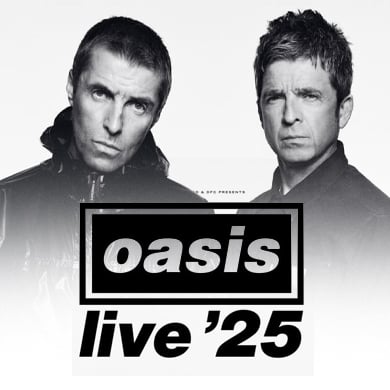Oasis: A Complete History
Origins (Early 1990s)
-
Oasis formed in 1991 in Manchester, England, initially under the name The Rain.
-
The original lineup featured Liam Gallagher (vocals), Paul “Bonehead” Arthurs (guitar), Paul “Guigsy” McGuigan (bass), and Tony McCarroll (drums).
-
After Liam’s brother, Noel Gallagher, joined in 1991 as lead guitarist and chief songwriter, the band renamed themselves Oasis.
Breakthrough (1993–1994)
-
Oasis signed with Creation Records in 1993.
-
Their debut single, “Supersonic” (April 1994), reached the UK Top 40.
-
Their first album, Definitely Maybe (1994), became the fastest-selling debut album in UK history at the time.
-
Singles like “Live Forever” and “Cigarettes & Alcohol” made them icons of the emerging Britpop movement.
Peak Britpop Era (1995–1996)
-
In 1995, Oasis released their second album, (What’s the Story) Morning Glory?
-
It featured “Wonderwall”, “Don’t Look Back in Anger”, and “Champagne Supernova”.
-
The album became an international phenomenon, topping charts worldwide and selling over 20 million copies.
-
-
This period coincided with their famous rivalry with Blur, highlighted by the 1995 “Battle of Britpop” when both bands released singles on the same day (Blur’s “Country House” beat Oasis’ “Roll With It” to No. 1, but Oasis’ album won the war in sales).
-
In 1996, Oasis played two legendary shows at Knebworth, with over 250,000 attendees across two nights. Over 2.5 million people applied for tickets.
Excess & Turbulence (1997–1999)
-
Their third album, Be Here Now (1997), became the fastest-selling album in British history but was later criticised for being overblown and indulgent.
-
Oasis began to fracture under pressure, fame, and internal conflicts, particularly between the Gallagher brothers.
-
Founding members Bonehead and Guigsy left in 1999, replaced by Gem Archer (guitar) and Andy Bell (bass). Drummer Alan White had already replaced Tony McCarroll in 1995.
Reinvention (2000–2004)
-
Standing on the Shoulder of Giants (2000) marked a darker, more experimental sound.
-
The band released Heathen Chemistry (2002), which included hits like “Stop Crying Your Heart Out” and “Little By Little.”
-
While still successful, Oasis’ critical and commercial dominance had waned.
-
More lineup changes occurred: Alan White left in 2004, replaced by Zak Starkey (son of Ringo Starr, though not an official member).
Final Years (2005–2009)
-
Don’t Believe the Truth (2005) restored some acclaim with songs like “Lyla” and “The Importance of Being Idle.”
-
Dig Out Your Soul (2008) continued with a heavier, psychedelic sound.
-
By 2009, tensions between Liam and Noel reached a breaking point.
-
On 28 August 2009, just before a festival show in Paris, Noel Gallagher announced his departure, citing an inability to work with Liam. Oasis officially split.
Aftermath (2009–Present)
-
Noel Gallagher formed Noel Gallagher’s High Flying Birds in 2010, enjoying critical and commercial success.
-
Liam Gallagher and other Oasis members (Archer and Bell) formed Beady Eye (2010–2014), which released two albums before disbanding.
-
Liam later launched a successful solo career, with multiple UK No.1 albums.
-
Despite constant reunion rumours, the Gallagher brothers remain estranged, with frequent public spats in the media.
Legacy
-
Oasis are widely regarded as one of the most important British bands of all time.
-
They sold over 75 million records worldwide.
-
Their anthems (“Wonderwall”, “Don’t Look Back in Anger”, “Live Forever”) remain staples of British culture.
-
The Gallagher brothers’ volatile relationship, charisma, and working-class swagger made them icons beyond music.
✨ In short: Oasis rose from Manchester’s indie scene to become the defining band of Britpop, capturing the 1990s with their swagger and stadium anthems. Though they burned out amid chaos, their legacy continues to loom large.
- Display 30 Products per page

